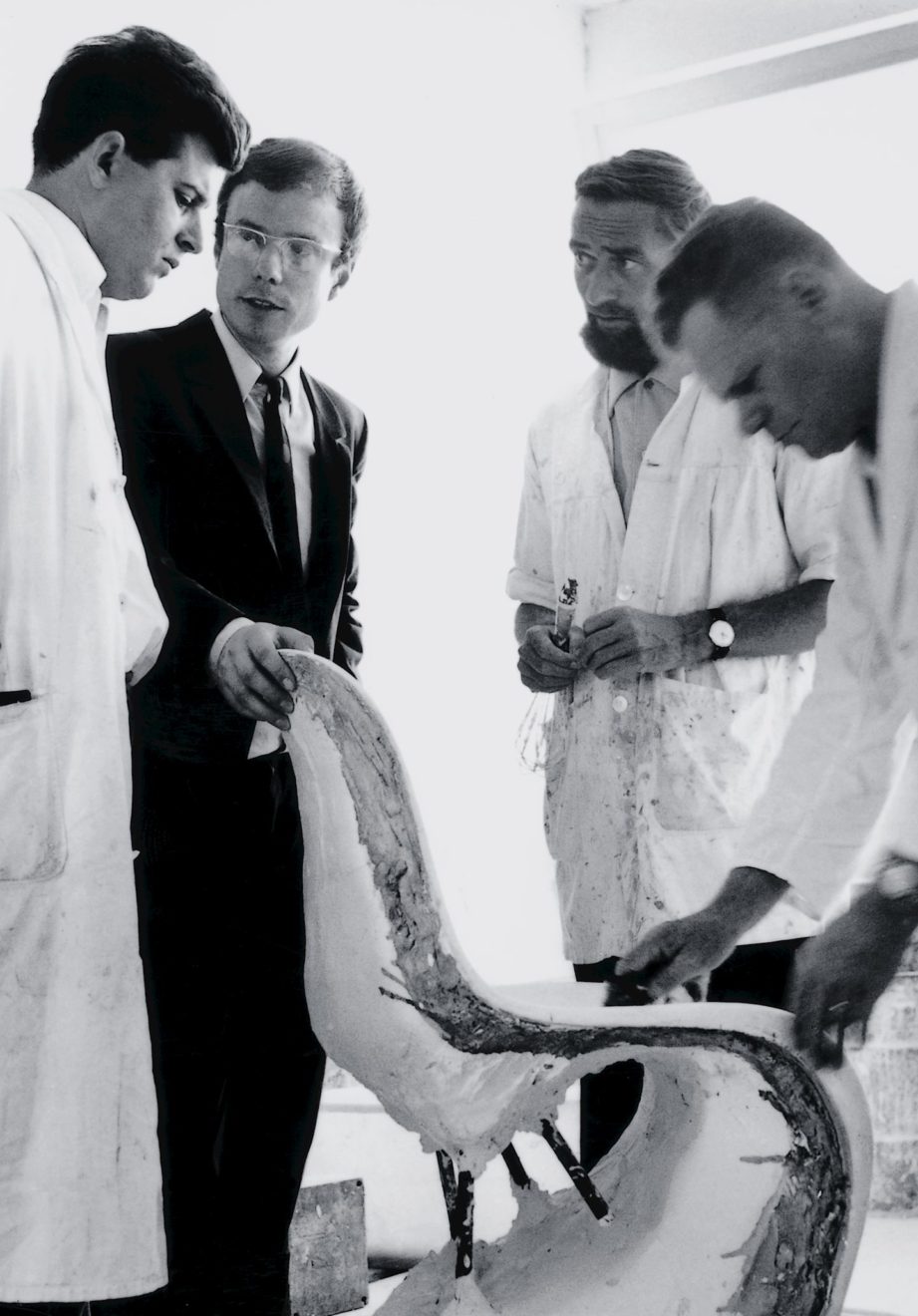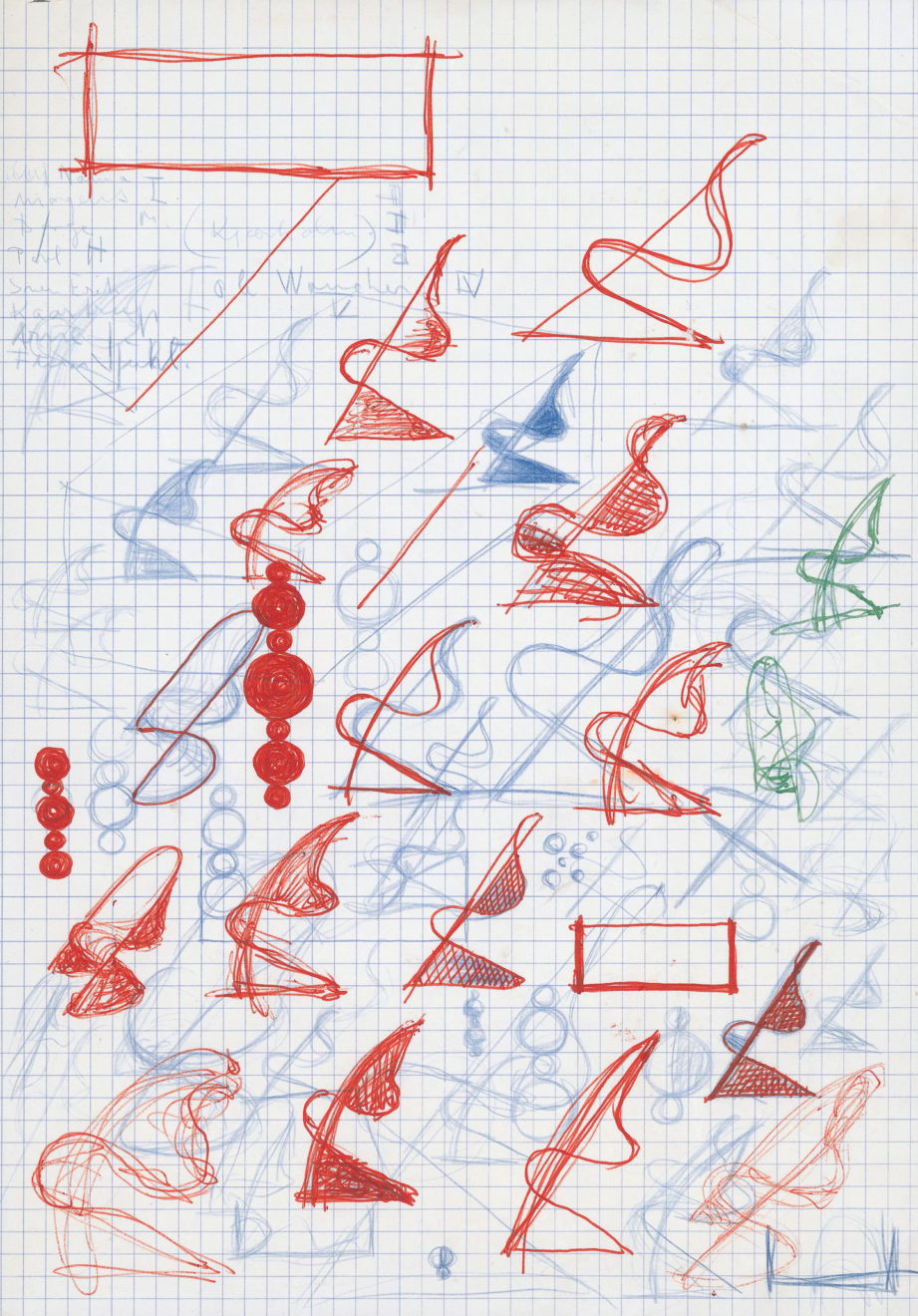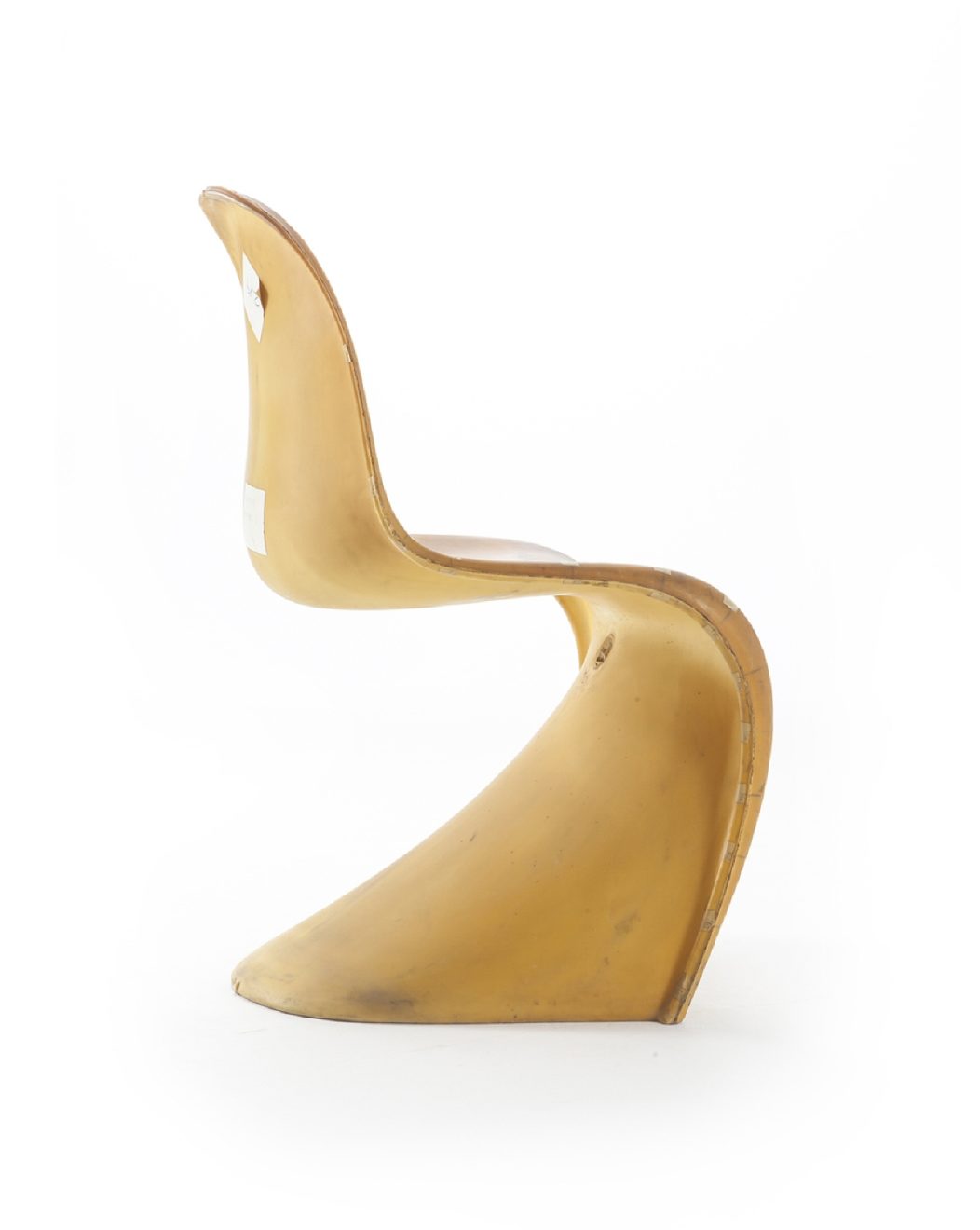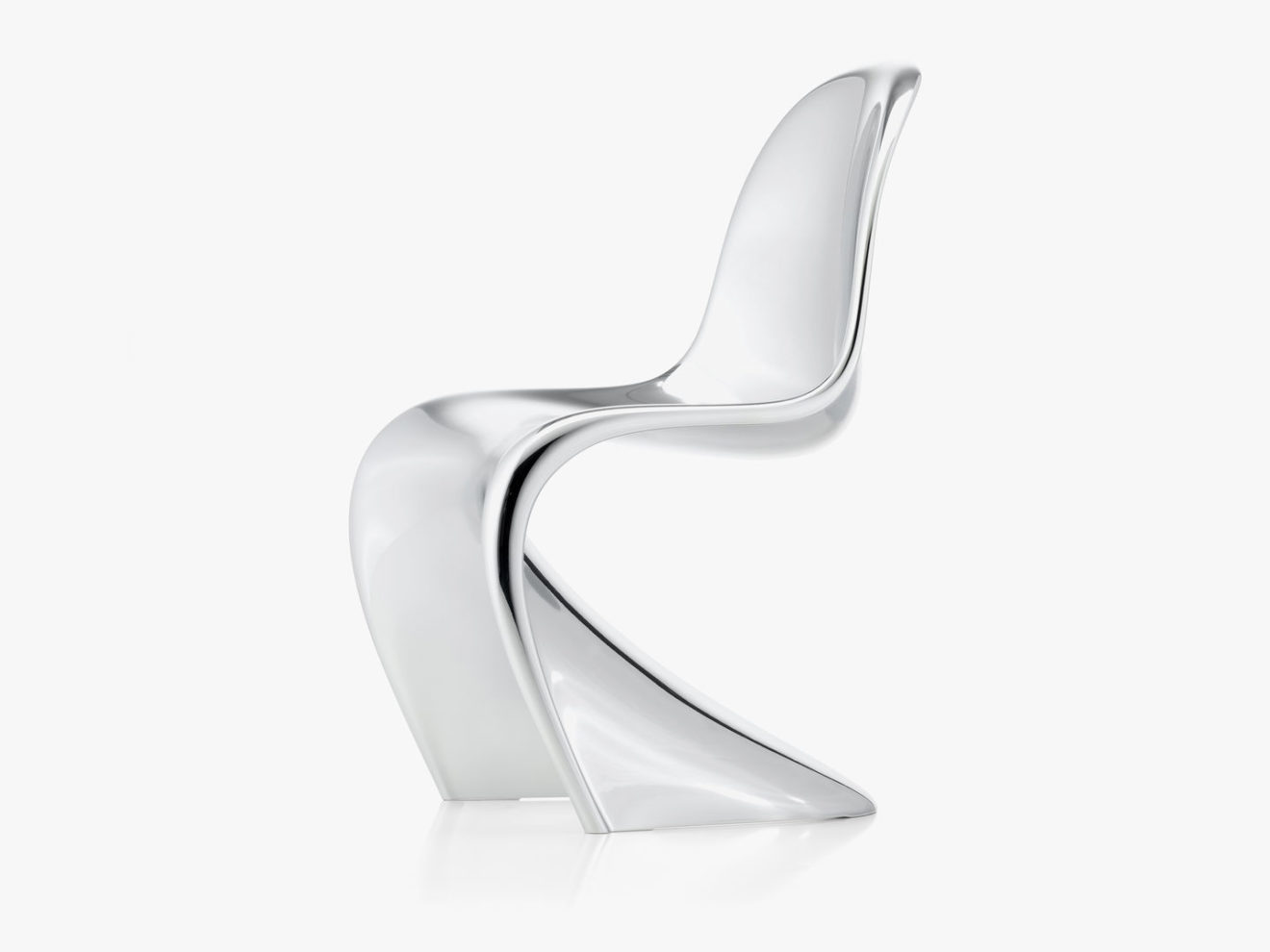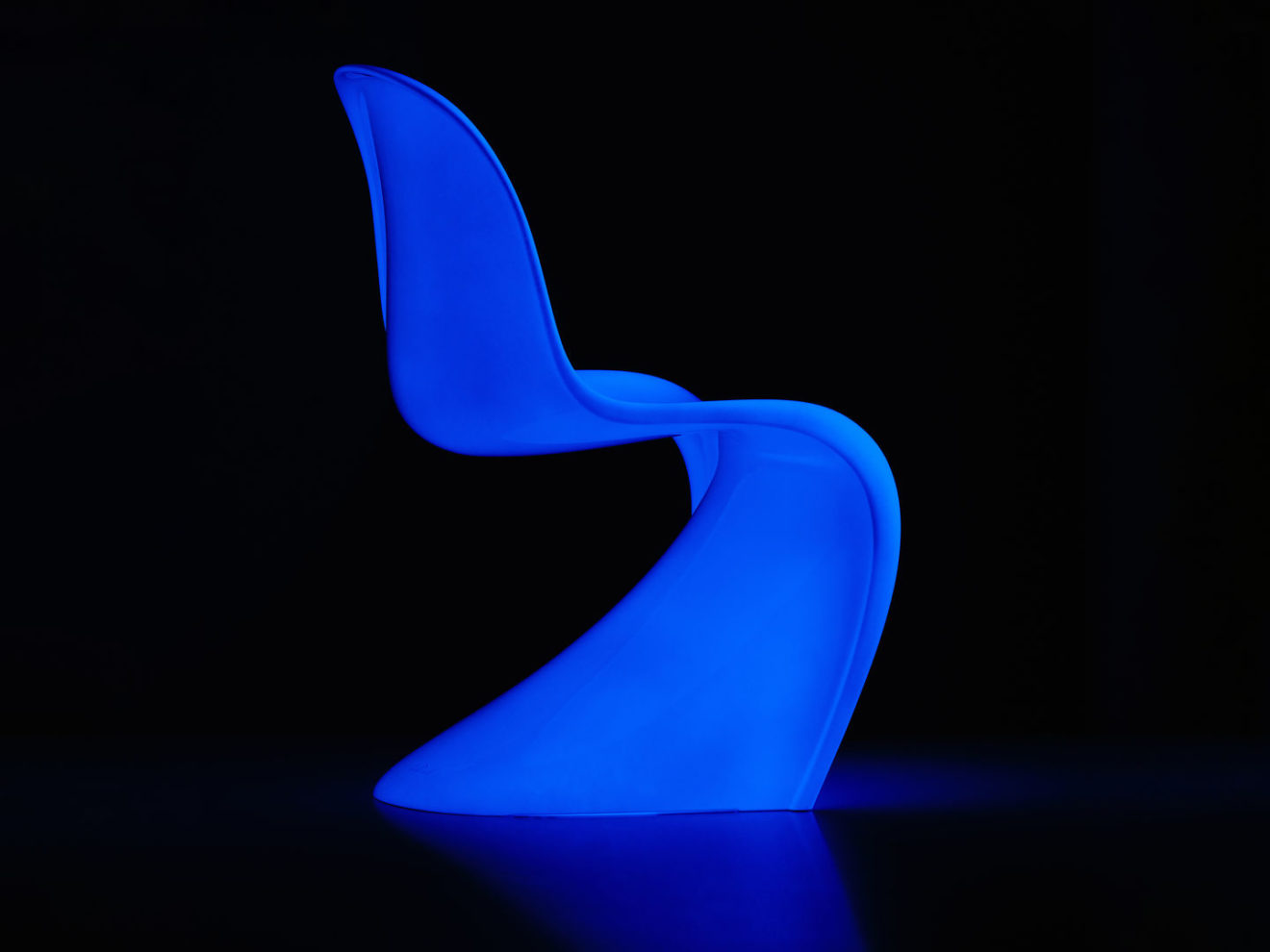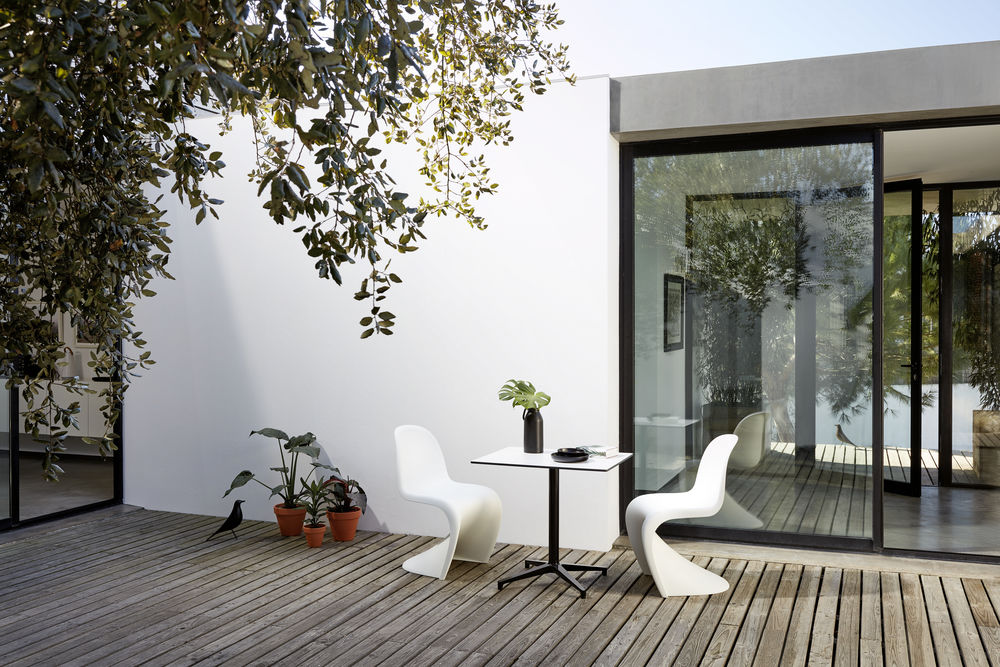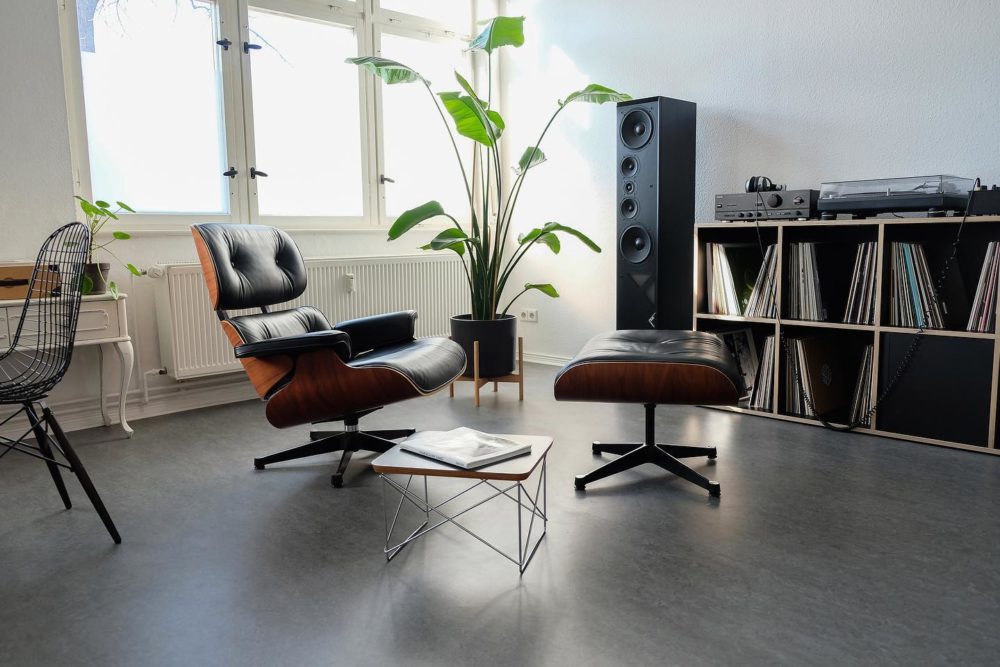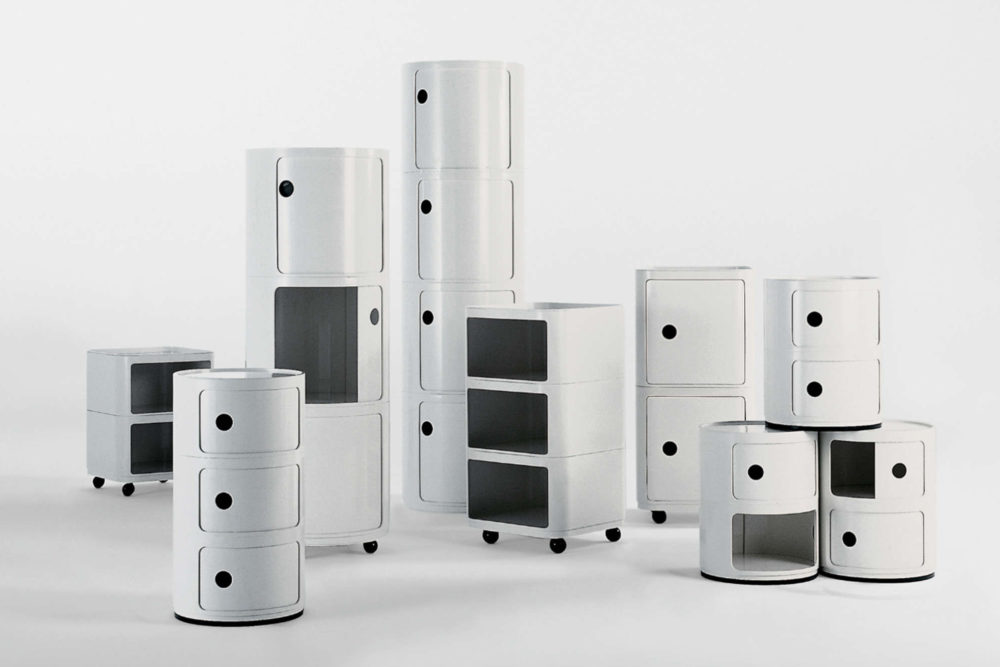Panton Chair
Considered one of Denmark’s most innovative 20th-century designers, Verner Panton’s daring concepts and futuristic ideas saw him create one of the great masterpieces of Danish furniture design – the eponymous Panton Chair.
Born in the small Danish hamlet of Gamtofte, and a student at Odense Technical College, Panton was already an experienced artist before enrolling in architecture at Copenhagen’s Royal Danish Academy of Fine Arts. Panton went on to work as a furniture designer for mentor Arne Jacobsen, where he earned a reputation for his unorthodox approach. This inevitably led to him founding his own design and architectural studio in 1955. Here, he combined his innovative and unconventional ideas with numerous designs for architecture, furniture and lighting. Panton’s passion for bright colourways and geometric shapes also saw him create a range of textile designs, and interior installations that would go on to attain legendary status.
It was just five years after founding his own studio that Panton would design his iconic plastic cantilever chair, in 1960. Combining an anthropomorphic “S” shape with a flexible material made the chair both comfortable and stackable – a versatility which meant they could be used individually or in groups, both in- and outdoors. In a 2018 interview, Panton’s Swedish wife and business manager, Marianne, reminisces about the pair’s search for success with the futuristic Panton chair: “Verner and I drove all over Europe with this chair: Milan, Cannes – we travelled far and wide in search of a manufacturer”.
It was during the Sixties that Panton’s chair design caught the attention of family-owned furniture company Vitra. The reputed Swiss company initially needed some persuasion to pursue such a daring seating design concept, with a well-known American designer at the time remarking that the chair “shouldn‘t be called a chair”, claiming it was not suitable to sit on. It was the head of Vitra’s product development at the time, Rolf Fehlbaum, who strongly backed Panton’s forward-thinking design, ultimately persuading Vitra’s founder (his father, Willi Fehlbaum) to pursue the stackable chair’s mass manufacture. “Without Rolf there would have been no Panton Chair,” Panton once remarked.
Finally developed by Vitra for serial production in 1967 – seven years after Panton first designed it – the world’s first once-piece, moulded plastic chair was officially launched to market. However, technology limitations at the time led to several modifications to the original design, most notably a series of ridges between the base and seat. The material subsequently aged and weathered more quickly than was initially assumed, causing chairs to break, which threatened Vitra’s image. As a result, production for the chair was discontinued in 1979 but interest in its unique design continued over the years, and Vitra resumed production again in 1990 – with rigid polyurethane foam providing a much greater resistance to breakage.
Still considered to be one of the great masterpieces of Danish design, it was named in the Danish Culture Canon in 2006, has received numerous international awards, and can now be seen on display at many museums worldwide. Continually updated by Vitra through decades of plastic technology innovations, the manufacturer issued two limited edition designs to celebrate fifty years since the chair’s first launch – 666 pieces of ‘Panton Chrome’ boasting a dazzling mirrored chrome surface, alongside 333 ‘Panton Glow’ chairs, made with a bright, fluorescent finish. With such an expressive form and striking sculptural shape, the Panton Chair has unsurprisingly battled through its manufacturing setbacks to become one of the most iconic designs of the Twentieth Century.

